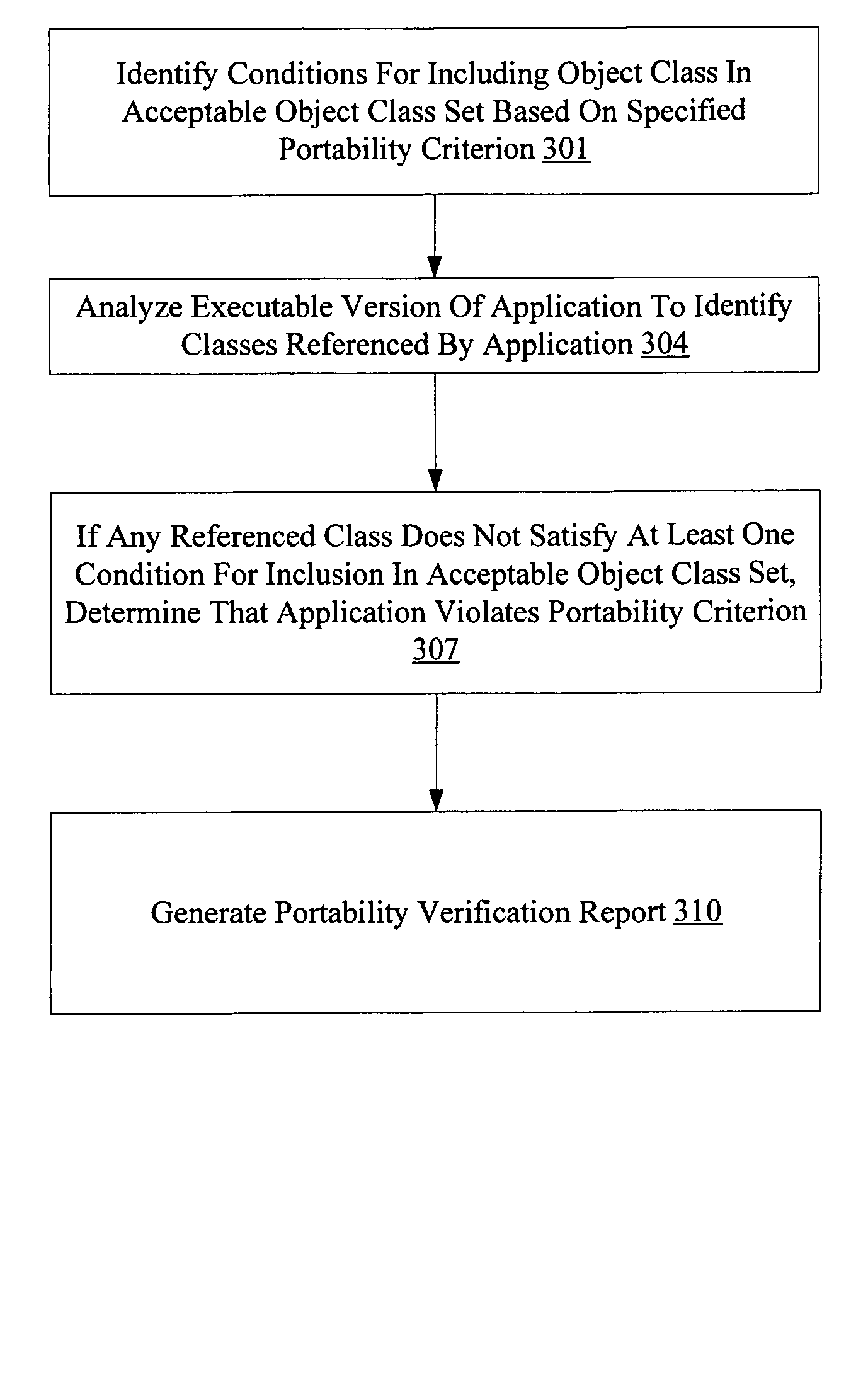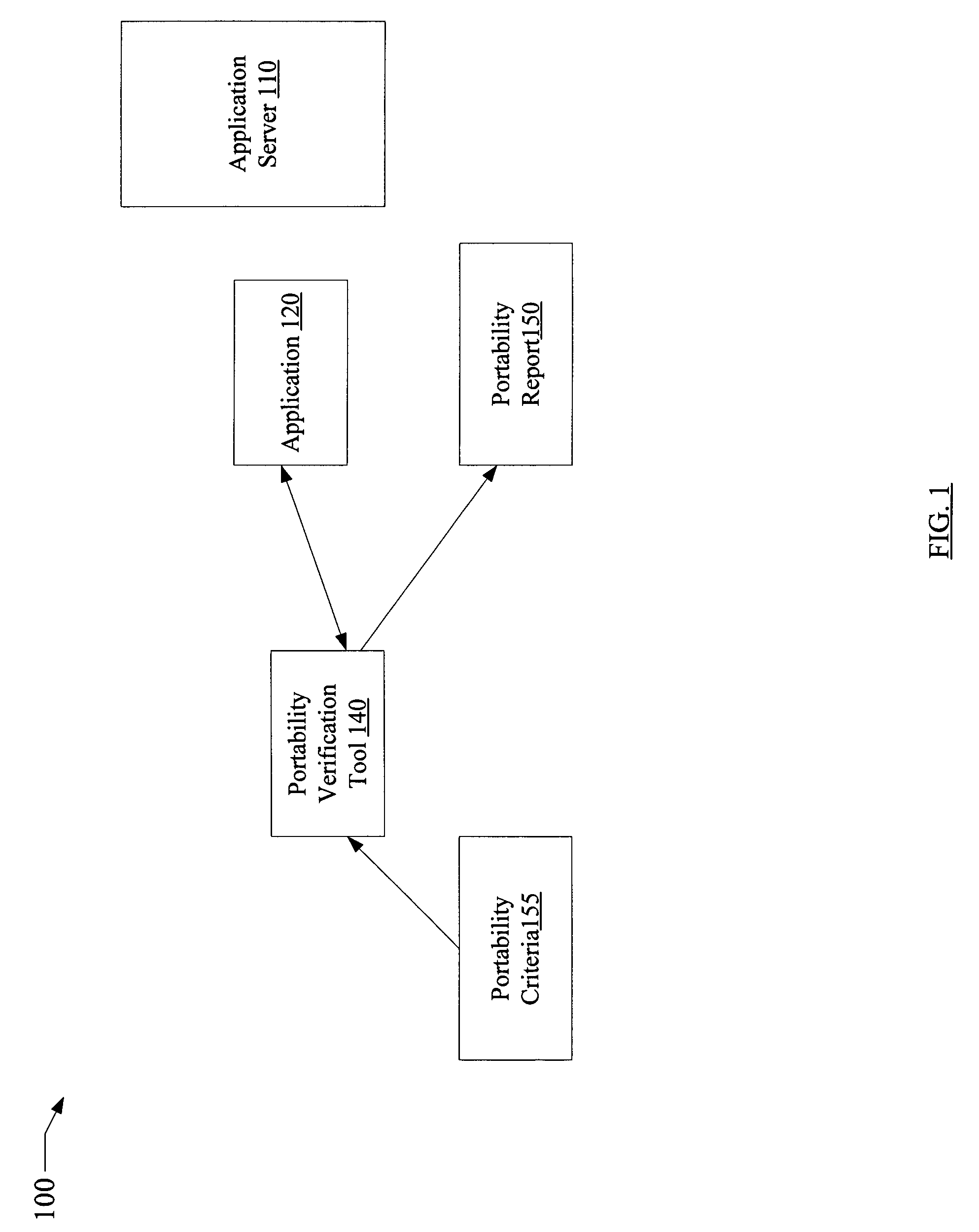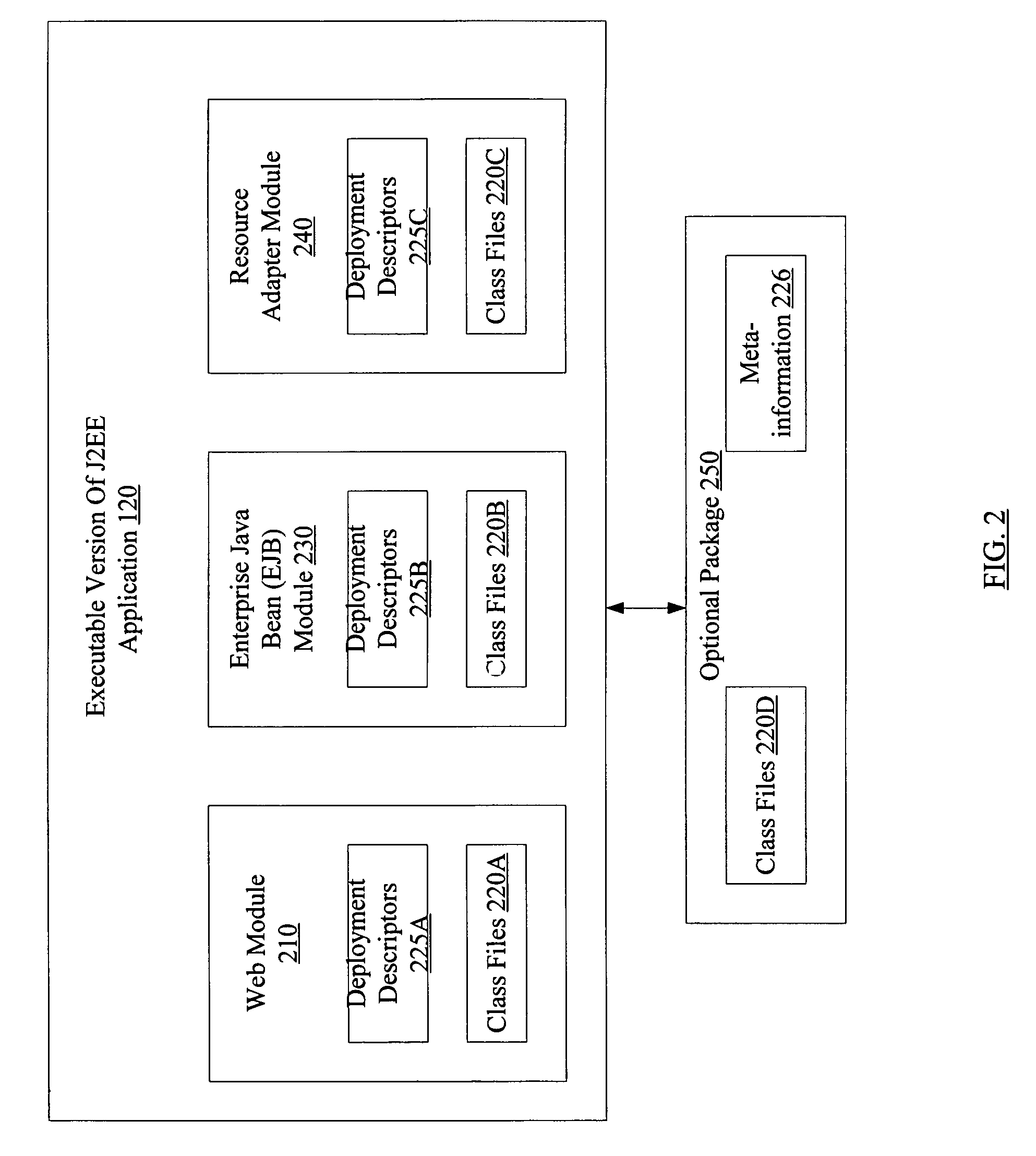Detection of non-standard application programming interface usage via analysis of executable code
a technology of executable code and non-standard application, applied in the field of computer systems, can solve the problems of requiring hundreds of person-years of development resources, increasing complexity and expense of developing and deploying enterprise-level computer system applications, and a single major release of an application may take months or even years
- Summary
- Abstract
- Description
- Claims
- Application Information
AI Technical Summary
Benefits of technology
Problems solved by technology
Method used
Image
Examples
Embodiment Construction
[0017]FIG. 1 is a block diagram illustrating one embodiment of a system 100. The system includes an application 120 and a portability verification tool 140. Portability verification tool 140 may be configured to identify one or more conditions for inclusion of an object class in a set of acceptable object classes, wherein a reference to any object class of the set of acceptable object classes by application 120 is in compliance with one or more specified portability criteria 155. In addition, the portability verification tool 140 may also be configured to analyze an executable version of application 120 to identify object classes referenced by the application, and generate a portability report 150 for the application 120. Portability report 150 may indicate that the application 120 violates a specified portability criterion 155 if an object class referenced by the application 120 does not meet at least one condition of the one or more conditions. Portability criteria 155 may, for ex...
PUM
 Login to View More
Login to View More Abstract
Description
Claims
Application Information
 Login to View More
Login to View More - R&D
- Intellectual Property
- Life Sciences
- Materials
- Tech Scout
- Unparalleled Data Quality
- Higher Quality Content
- 60% Fewer Hallucinations
Browse by: Latest US Patents, China's latest patents, Technical Efficacy Thesaurus, Application Domain, Technology Topic, Popular Technical Reports.
© 2025 PatSnap. All rights reserved.Legal|Privacy policy|Modern Slavery Act Transparency Statement|Sitemap|About US| Contact US: help@patsnap.com



